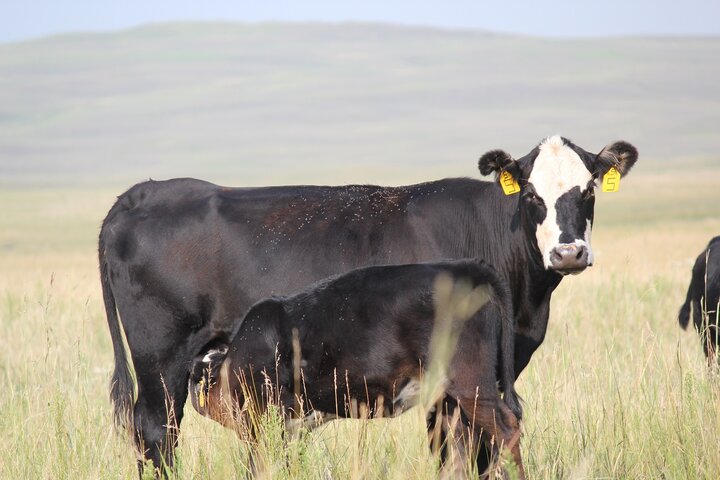Generally, mid to late summer is a time when cow-calf producers relax a little. Calving is over; cows and calves are on summer pastures and typically it is a relatively uneventful time. But as summer progresses, producers should be on the lookout for summer calf pneumonia. Summer calf pneumonia is the term used to describe respiratory disease in pre-weaned calves on pasture. Over the past several years, this condition has been increasingly identified in beef herds. These outbreaks tend to be unpredictable, occurring in herds at all levels of management.
The infectious agents associated with summer calf pneumonia appear to be similar to those implicated in typical post-weaning bovine respiratory disease complex such as Mannheimia haemolytica, Histophilus somni, Pasteurella multocida, Infectious Bovine Rhinotracheitis Virus (IBR), and Bovine Respiratory Syncytial Virus (BRSV). Compared to the post-weaning bovine respiratory disease encountered by animals entering backgrounding or feed lots, little is known about the risk factors that predispose calves to pneumonia while on pasture.
In herds examined with the summer pneumonia problem, two patterns have emerged. One pattern is in very young calves a month of age or less. It is thought this is related to poor colostrum quality or quantity as a result of poor nutrition in the cows prior to calving, such as in drought situations. The other more common pattern is in late summer to early fall as the average age of the calves reach 90 to 120 days. This is the time that colostral protection is running out making the calves susceptible.
Some of the factors that have been speculated to be involved include the following.
- Exposure of calves to older calves (such as feedlot animals) shedding high levels of infectious agents (but not necessarily sick themselves)
- Hot, dry, dusty conditions that interfere with the respiratory tract’s normal defense mechanisms that typically occur in late summer along with dusty conditions that occur during harvest
- Adverse weather conditions such as wide temperature swings between day and night
- Crowding and separation from mothers for prolonged periods of time, such as during breeding or synchronization
Signs of respiratory disease in pre-weaned calves do not always include breathing problems such as cough or rapid respirations, although those signs may become more obvious when the herd moved from one location to another. Sluggishness, a reluctance to keep up with the herd, and drooping of ears are commonly noted. Many affected calves will have high fevers.
Most reports are that treating calves with summer pneumonia is frequently successful. It is important to identify and treat affected calves early. While treatments appear successful, they are difficult and frustrating to accomplish on individual calves in pasture situations.
Vaccines against respiratory pathogens at branding or turnout time have been utilized more and more by cattle producers in an attempt to reduce the occurrence of calf pneumonia on pasture. While this is successful for many, outbreaks of calf pneumonia occur in well-vaccinated herds as well. Producers should seek veterinary input for their branding time or turnout vaccine program, especially when changes in products or timing are contemplated.
Since much remains to be learned about the factors contributing to pre-weaning calf pneumonia, several universities have partnered in a three-year case control study of herds that have experienced summer pneumonia. Hopefully we will gain more understanding of the factors associated with this condition from this study.
Topics covered:
Cattle health & BQA, Cattle health, Cattle diseases & health issues

